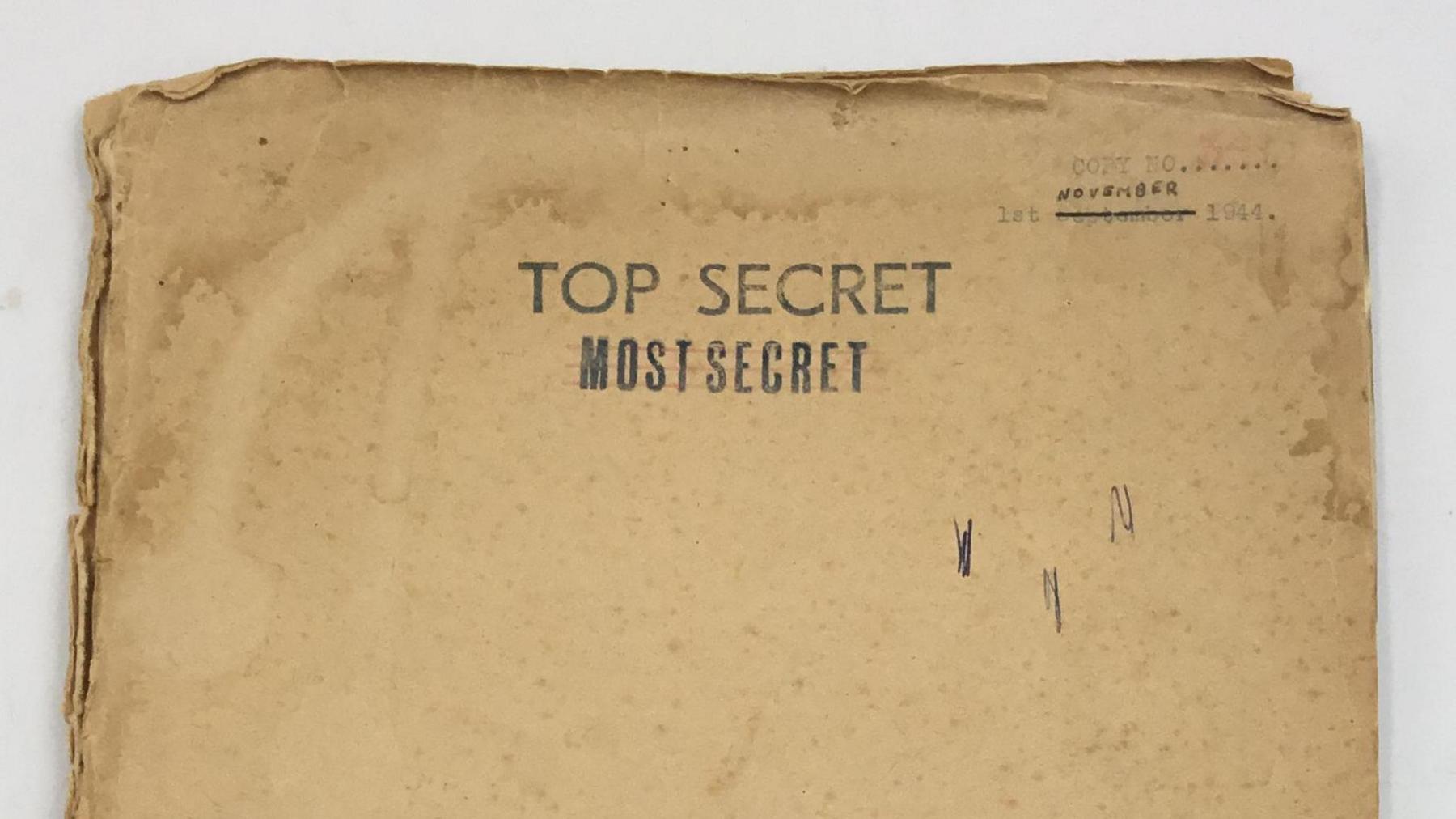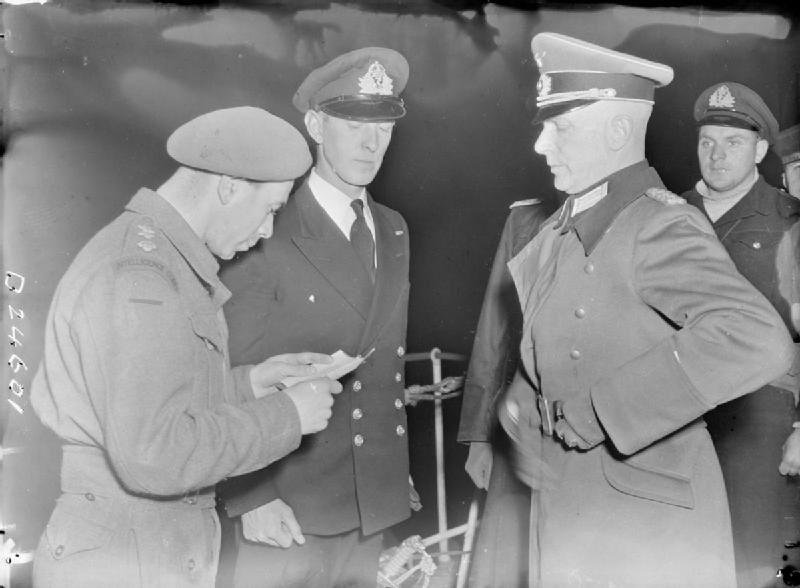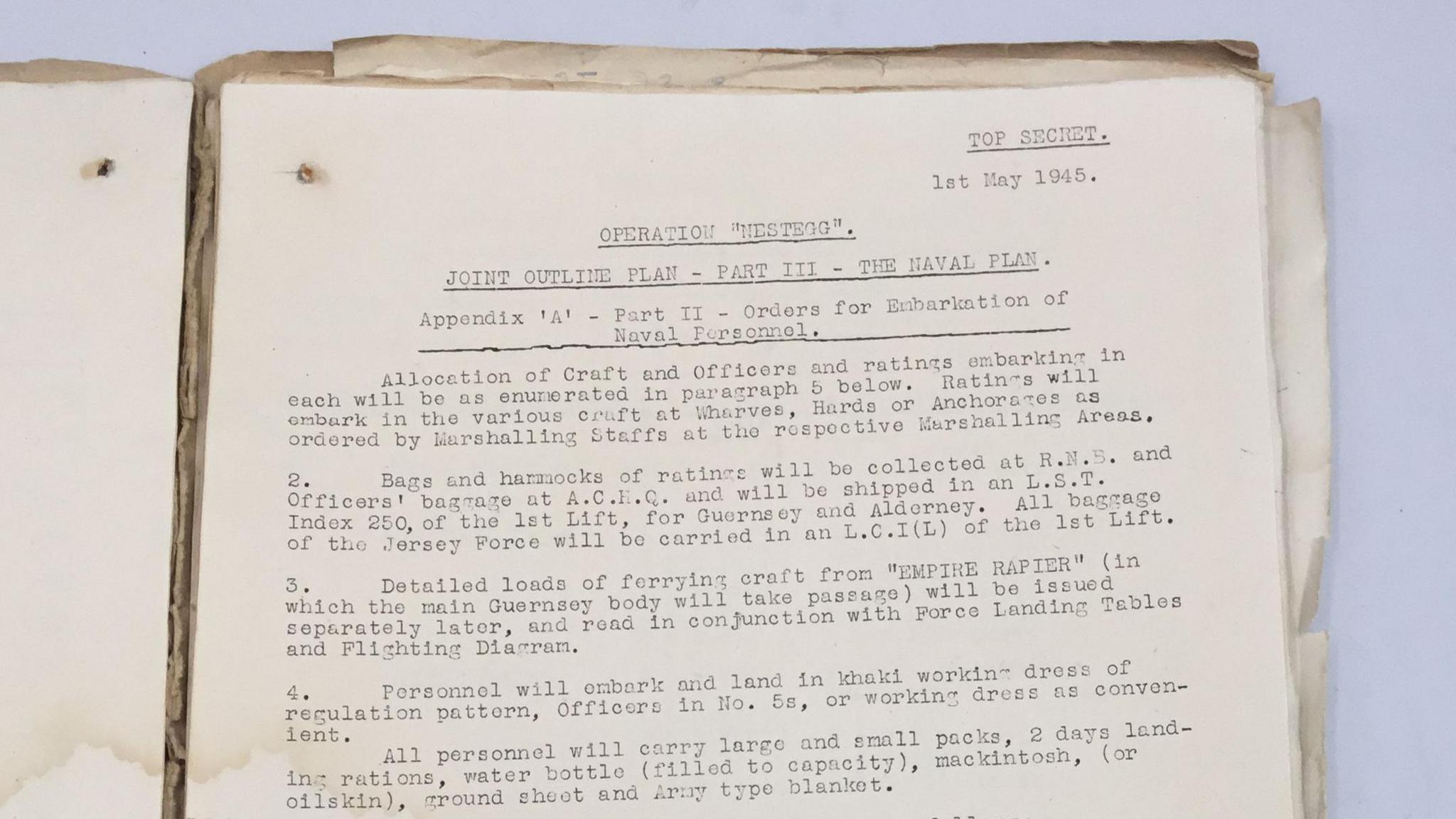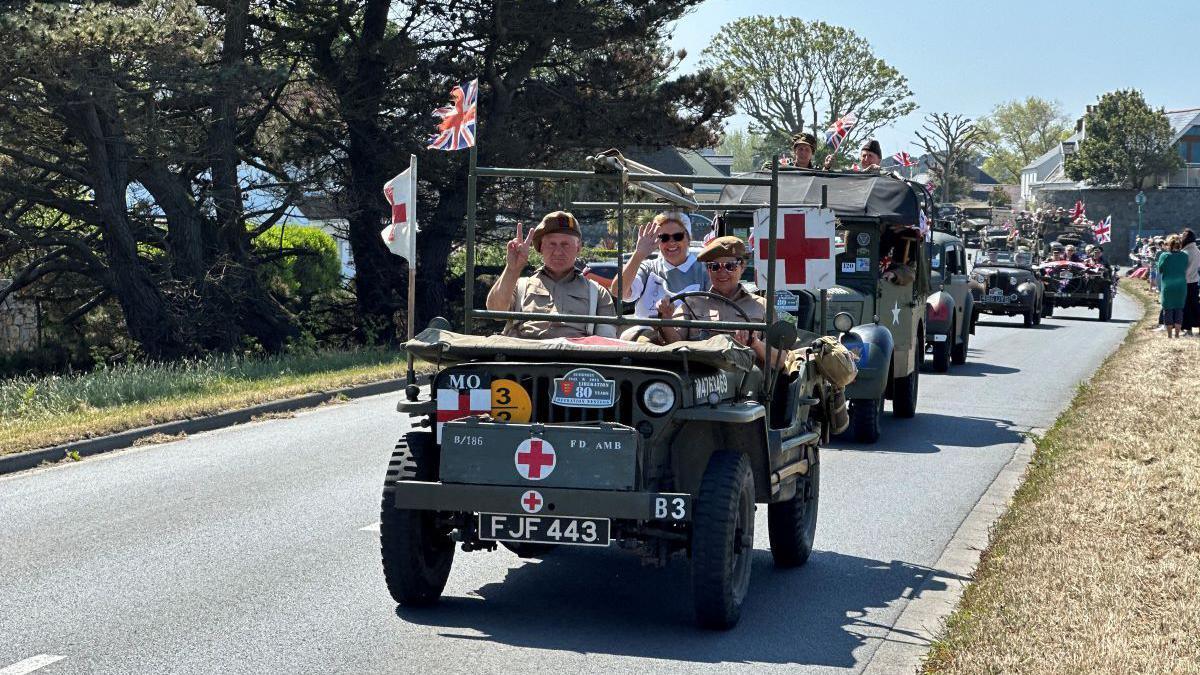Secret plan to liberate islands found in dusty box

The top secret plan set out the successful British plan to liberate the Channel Islands
- Published
A copy of the top secret plan for the liberation of the Channel Islands at the end of World War Two will go up for auction next week - after it was discovered in a dusty cardboard box.
Codenamed Operation Nestegg, the 50-page document spelled out the plan in detail, from which beaches to land on to the number of water bottles each soldier would carry.
Matt Crowson, from Hansons Auctioneers, said: "It's an incredible story - the document had been part of a dusty box of papers in a UK saleroom, the value of which was considered negligible.
"But on closer examination the vendor came across a piece of World War Two history detailing the freeing of the only Nazi-occupied area of the British Isles."
It will go under the hammer at Hansons' auction house in Etwall, Derbyshire, on 13 August, with a guide price of £800-£1,200.

The German commander-in-chief of the Channel Islands surrendered to the British forces on 9 May 1945
The Channel Islands of Jersey, Guernsey, Alderney, Sark and Herm had been under German Occupation since June 1940.
Conditions drastically worsened for islanders after D-Day in June 1944.
As the Allies recaptured parts of France, the islands became cut off from food, coal and medicine supplies.
With an estimated 40,000 German troops still guarding the islands, the document showed the potential dangers the British envisioned.
Jersey and Guernsey, the two largest islands, were to be liberated "as nearly simultaneously as possible", to reduce the risk of the German troops reacting to news from the other island, said the document.
The beaches deemed suitable for landings, such as St Aubin's Bay in Jersey and L'Ancresse in Guernsey, had a treacherous 33ft (10m) tidal range.
The difficulty of landing troops simultaneously on both islands meant three 700-man battalions and engineer units were needed.

The plan was drawn up between November 1944 and May 1945
The top secret document set out further detailed instructions.
"Personnel will embark and land in khaki working dress of regulation pattern. Officers in No. 5s, or working dress as convenient," it said.
"All personnel will carry large and small packs, two days landing rations, water bottle (filled to capacity), mackintosh (or oilskin) ground sheet and Army type blanket."
Despite the difficulties, Operation Nestegg was a success and both islands were liberated without any bloodshed on 9 May 1945.
Sark, with a population of 470, was liberated the next day while Alderney, where most of the population had left, followed on 16 May.
Story of freedom
Mr Crowson said the top secret document "really brings home the suffering of the Channel Islanders during the German Occupation".
He said about 2,300 islanders were deported to German prison camps.
"By the time of the liberation in 1945 many [islanders] were close to starvation," he said.
"The essential role played by the men and women involved in Operation Nestegg, and their story of freedom, cannot be underestimated."
Mr Crowson said the fact the document "came to light in the 80th anniversary year of Liberation Day" made it "even more special".
Follow BBC Guernsey on X, external and Facebook, external. Follow BBC Jersey on X, external and Facebook, external. Send your story ideas to channel.islands@bbc.co.uk, external.
Related topics
- Published2 July

- Published8 February

- Published9 May
